From inside (document excerpt):
Print Vendor Instructions Paper Size: · 11×17 How to use this file Operator’s Manuals · Body – 50 lbs brilliant white offset or equivalent · Cover – on pre-printed two tone “Swash ” stock. Press: · Body – 1 color, 2-sided · Cover – 1 color, 1 sided Bindery: Covers: · Saddle stitch, face trim *if too thick for saddle stitch, tape bind · FRONT COVER is present at the beginning of the file. · BACK COVER is the page immediately after the front cover. · The part number for this manual (typically a 172 __ number) is located on the front cover.
Snow Blower and Snow Thrower User Manual Free Download. Snow Removal Operator’s Manual. Free Manual Download PDF.
· This file may contain several manual which differ only by their covers. See the part number at the bottom of the cover page Body: · The body for all manuals is identical regardless of the cover. · Odd number pages are always right hand pages, even number pages are always left hand pages. General: · This instruction sheet is NOT part of the manual and must not be printed. · Pages labeled “THIS PAGE INTENSIONALLY BLANK ” are placement pages and should NOT be printed. THIS PAGE INTENTIONALLY BLANK (FOR PLACEMENT ONLY – DO NOT PRINT) OPERATOR’S MANUAL Large Frame Snowthrower 860 Series Large Frame Snowthrower Mfg. No. 1693984 1693985 1694242 Description 860M, 8HP Snowthrower 860M, 8HP Snowthrower (Export) 860E, 8HP Snowthrower 960 Series Large Frame Snowthrower Mfg. No. 1694435 1694439 Description 960M, 9HP Snowthrower (Export) 960E, 9HP Snowthrower 1722659-04 Rev 4/2003 TP 100-2491-04-LW-S MANUFACTURING, INC. 500 N Spring Street / PO Box 997 Port Washington, WI 53074-0997 www.simplicitymfg.com 2003, Simplicity Manufacturing, Inc. Printed in USA. Table of Contents Safety Rules & Information General Operation .2 Slope Operation .2 Children .3 Emissions 3 Service & Maintenance .3 ANSI B71.3-1995 Warnings 4 Identification Tags 5 Decals 6 Safety Icons .7 Features, Controls, & Operation Control Locations .8 Starting Controls 10 Ground Speed Controls .11 Auger Control 11 Deflector Controls 11 Scraper Height .11 Traction Lock Control .11 General Operation Checks Before Each Start-Up .12 Starting The Engine .13 Operating The Snowthrower 14 Ground Speed Selector .14 Engine Speed 14 Deflector 15 Scraper Bar & Skid Shoes .15 Free Wheeling and Traction Drive Lock .16 After Each Use 16 Regular Maintenance Schedule 17 Checking Tire Pressure .17 Checking Auger Gear Case Lubrication 17 Lubrication .18 Check / Lube Free-Hand Linkage 19 Storage 19 Troubleshooting, Adjustment, & Service Troubleshooting .20 Speed Selector Pivot Adjustment 22 Traction Drive System Adjustment .22 Auger Drive System Adjustment 23 Discharge Chute Pinion Adjustment 24 Discharge Chute Gear Bracket Adj 24 Belt Replacement 25 Shear Pin Replacement .26 Specifications 27 Replacement Parts & Maintenance Items 28 Technical Manuals .28 WARNING You must read, understand and comply with all safety and operating instructions in this manual before attempting to set-up and operate your snowthrower. Failure to comply with all safety and operating instructions can result in loss of machine control, serious personal injury to you and /or bystanders, and risk of equipment and property damage. The triangle in the text signifies important cautions or warnings which must be followed. WARNING Engine exhaust from this product contains chemicals known, in certain quantities, to cause cancer, birth defects, or other reproductive harm. 1 Safety Rules & Information Read these safety rules and follow them closely. Failure to obey these rules could result in loss of control of unit, severe personal injury or death to you, or bystanders, or damage to property or equipment. The triangle in text signifies important cautions or warnings which must be followed. GENERAL OPERATION · Read, understand, and follow all instructions in the manual and on the unit before starting. · Only allow responsible adults, who are familiar with the instructions, to operate the unit (local regulations can restrict operator age). · Clear the area of objects such as rocks, toys, wire, etc., which could be picked up and thrown. · Be sure the area is clear of other people. Stop unit if anyone enters the area. · Always look down and behind before and while travelling in reverse. · Be aware of the discharge direction and do not point it at anyone. Do not point the discharge at glass enclosures, automobiles, or windows. · Disengage all clutches (release drive and auger control levers) before starting the engine. · Never leave a running unit unattended. Always disengage the auger and traction controls, stop engine, and remove keys. · Stop engine before unclogging chute. · Operate only in daylight or good artificial light. · Do not operate the unit while under the influence of alcohol or drugs. · Watch for traffic when operating near or crossing roadways. · Use extra care when loading or unloading the unit into a trailer or truck. · Keep in mind the operator is responsible for accidents occurring to other people or property. · Data indicates that operators, age 60 years and above, are involved in a large percentage of power equipment-related injuries. These operators should evaluate their ability to operate the unit safely enough to protect themselves and others from injury. · All operators should seek and obtain professional and practical instruction. · Always wear substantial footwear and appropriate winter clothing. Wear foot-ware that improves traction on slippery slopes. DO NOT wear long scarves or loose clothing that could become entangled in moving parts. · Before using, always visually check that all hardware is present, in-tact, and secure. Replace worn or damaged parts. · Never operate the machine with defective guards, or without safety protective devises in place. · Stop engine before: refuelling, removing an attachment, making adjustments (unless the adjustment can be made from the operator’s position). · Follow the manufacturer’s recommendation for wheel weights or counterweights. · Adjust skid shoe height to clear gravel or crushed rock surfaces. · Do not touch snowthrower parts which may be hot from operation. Allow such parts to cool before attempting to service the unit. SLOPE OPERATION WARNING Never operate on slopes greater than 17.6 percent (10°) which is a rise of 3-1/2 feet (106 cm) vertically in 20 feet (607 cm) horizontally. When operating on slopes use additional wheel weights or counterweights. See your dealer to determine which weights are available and appropriate for your unit. Select slow ground speed before driving onto slope. Travel UP and DOWN the slope, never across the face, use caution when changing directions and DO NOT START OR STOP ON SLOPE. Slopes are a major factor related to loss-of-control and tipover accidents, which can result in severe injury or death. All slopes require extra caution. If you cannot back up the slope or if you feel uneasy on it, do not operate on it. Do · See your authorized dealer for recommendations counterweights to improve stability. · Travel up and down slopes, not across. · Remove obstacles such as rocks, tree limbs, etc. · Watch for holes, ruts, or bumps. Uneven terrain could overturn the unit. Snow can hide obstacles. · Use slow speed. Tires may lose traction on slopes. Choose a low gear so that you will not have to stop or shift while on the slope. · Keep all movement on the slopes slow and gradual. Do not make sudden changes in speed or direction. · Always keep unit in gear especially when traveling downhill. Do Not · Do not start or stop on a slope. If tires lose traction, disengage the auger and proceed slowly straight down the slope. · Do not turn on slopes unless necessary, and then, turn slowly and gradually downhill, if possible. · Do not operate near drop-offs, ditches, or embankments. The unit could suddenly turn over if a wheel is over the edge of a cliff or ditch, or if an edge caves in. · Do not operate on wet surfaces. Reduced traction could cause sliding. · Do not shift to neutral and coast down hills. TP-600-3606-00-LW-UV 2 Safety Rules CHILDREN Tragic accidents can occur if the operator is not alert to the presence of children. Children are often attracted to the unit and the operating activity. Never assume that children will remain where you last saw them. · Keep children out of the area and under the watchful care of another responsible adult. · Be alert and turn unit off if children enter the area. · Before and during reverse operation, look behind and down for small children. · Never allow children to operate the unit. · Use extra care when approaching blind corners, shrubs, trees, or other objects that may obscure vision. EMISSIONS · Engine exhaust from this product contains chemicals known, in certain quantities, to cause cancer, birth defects, or other reproductive harm. · Look for the relevant Emissions Durability Period and Air Index information on the engine emissions label. SERVICE AND MAINTENANCE · Use extra care in handling gasoline and other fuels. They are flammable and vapors are explosive. a) Use only an approved container. b) Never remove gas cap or add fuel with the engine running. Allow engine to cool before refueling. Do not smoke. c) Never refuel the unit indoors. · If fuel is spilled, do not attempt to start the engine but move the machine away from the area of spillage and avoid creating any source of ignition until fuel vapors have dissipated. · Replace all fuel tank caps and fuel container caps securely. · Never fill containers inside a vehicle or on a truck bed with a plastic bed liner. Always place containers on the ground away from your vehicle before filling. · Remove gas-powered equipment from the truck or trailer and refuel it on the ground. If this is not possible, then refuel such equipment on a trailer with a portable container, rather than from a gasoline dispenser nozzle. · Keep nozzle in contact with the rim of the fuel tank or container opening at all times until fueling is complete. Do not use a nozzle lock-open device. · If fuel is spilled on clothing, change clothing immediately. · Maintain or replace safety and instruction labels as necessary. · Never run a unit in an enclosed area. · Keep nuts and bolts tight and keep equipment in good condition. · Never tamper with safety devices. Check their proper operation regularly and make necessary repairs if they are not functioning properly. · Keep unit free of debris build-up. Clean up oil or fuel spillage. · Stop and inspect the equipment if you strike an object. Repair, if necessary, before restarting. · Never make adjustments or repairs with the engine running unless specified otherwise in the engine manufacturer’s manual. · Components are subject to wear, damage, and deterioration. Frequently check components and replace with manufacturer’s recommended parts, when necessary. · Check control operation frequently. Adjust and service as required. · Use only factory authorized replacement parts when making repairs. · Always comply with factory specifications on all settings and adjustments. · Only authorized service locations should be utilized for major service and repair requirements. · Never attempt to make major repairs on this unit unless you have been properly trained. Improper service procedures can result in hazardous operation, equipment damage and voiding of manufacturer’s warranty. · Do not change engine governor settings or overspeed the engine. Operating the engine at excessive speed can increase the hazard of personal injury. · Disengage auger and traction, stop the engine, remove the key, and disconnect the spark plug wire(s) before: clearing blockages and chutes, performing service work, striking an object, or if the unit vibrates abnormally. After striking an object, inspect the machine for damage and make repairs before restarting and operating the equipment. 3 Safety Rules ANSI B71.3-1995 WARNINGS Training 1. Read the operating and service instruction manual carefully. Be thoroughly familiar with the controls and the proper use of the equipment. Know how to stop the unit and disengage the controls quickly. 2. Never allow children to operate the equipment. Never allow adults to operate the equipment without proper instruction. 3. Keep the area of operation clear of all persons, particularly small children and pets. 4. Exercise caution to avoid slipping or falling especially when operating in reverse. Preparation 1. Thoroughly inspect the area where the equipment is to be used and remove all doormat, sleds, boards, wires, and other foreign objects. 2. Disengage all clutches and shift into neutral before starting engine (motor). 3. Do not operate the equipment without wearing adequate winter outer garments. Wear footwear that will improve footing on slippery surfaces. 4. Handle fuel with care; it is highly flammable. (a) Use an approved fuel container. (b) Never add fuel to a running engine or hot engine. (c) Fill fuel tank outdoors with extreme care. Never fill fuel tank indoors. (d) Replace fuel cap securely and wipe up spilled fuel. 5. Use extension cords and receptacles as specified by the manufacturer for all units with electric drive motors or electric starting motors. 6. Adjust the collector housing height to clear gravel or crushed rock surfaces. 7. Never attempt to make any adjustments while the engine (motor) is running (except when specifically recommended by the manufacturer). 8. Let engine (motor) and machine adjust to outdoor temperatures before starting to clear snow. 9. Always wear safety glasses or eye shields during operation or while performing an adjustment or repair to protect eye from foreign objects that may be thrown from the machine. Operation 1. Do not put hands or feet near or under rotating parts. Keep clear of the discharge opening at all times. 2. Exercise extreme caution when operating on or crossing gravel drives, walks, or roads. Stay alert for hidden hazards or traffic. 3. After striking a foreign object, stop the engine (motor), remove the wire from the spark plug, disconnect the cord on electric motors, thoroughly inspect the snowthrower for any damage, and repair the damage before restarting and operating the snowthrower. 4. If the unit should start to vibrate abnormally, stop the engine (motor) and check immediately for the cause. Vibration is generally a warning of trouble. 5. Stop the engine (motor) whenever you leave the operating position, before unclogging the collector/impeller housing or discharge guide, and when making any repairs, adjustments, or inspections. 6. When cleaning, repairing, or inspecting make certain the collector/impeller and all moving parts have stopped. Disconnect the spark plug wire and keep the wire away from the plug to prevent accidental starting. 7. Do not run the engine indoors except for starting the engine or for transporting the snowthrower in or out of the building. Open the outside doors; exhaust fumes are dangerous. 8. Do not clear snow across the face of slopes. Exercise extreme caution when changing direction on slopes. Do not attempt to clear steep slopes. 9. Never operate the snowthrower without proper guards plates, or other safety protective devises in place. 10. Never operate the snowthrower near glass enclos …..
at the time of printing and are subject to change without notice. ENGINE: 8 HP* Tecumseh Make Model Horsepower Displacement Oil Capacity Tecumseh Snow King 8 @ 3600 rpm 19.43 Cu. in (318.3 cc) See Engine Owner’s Manual CHASSIS: Wheels – 860, 960 Tire Size: 16 x 4.8 Inflation Pressure: 20 psi (1,37 bar) Spout Rotation 210 Depress Impeller 12 ” (30cm) 4 Blade Ribbon Flighted Steel Auger Opening Height 19 ” (47.5 cm) Drive System Friction Disc, 5 Forward Speeds, 2 Reverse 9 HP* Briggs & Stratton Make Model Horsepower Displacement Oil Capacity Briggs & Stratton Intek Snow 9 @ 3600 rpm 18.6 Cu. in (305 cc) 28 oz. (,84 L) DIMENSIONS Effective Clearing Width -860 26 ” (65cm) -960 26 ” (65cm) Length -860 -960 Height -860 -960 Weight -860 -960 54 ” (137cm) 54 ” (137cm) 43 ” (109cm) 43 ” (109cm) 236 lbs (107kg) 235 lbs (106kg) 27 Replacement Parts & Accessories REPLACEMENT PARTS Replacement parts are available from your authorized dealer. Always use genuine Simplicity Service Parts. TECHNICAL MANUALS Additional copies of this manual are available, as well as fully illustrated parts lists. These manuals show all of the product’s components in exploded views (3D illustrations which show the relationship of parts and how they go together) as well as part numbers and quantities used. Important assembly notes and and torque values are also included. For applicable manuals currently available for your model, contact our Customer Publications Department at 262-284-8519. Have the information listed in the box below available when phoning in your request. Technical manuals can be downloaded from www.simplicitymfg.com Model: Mfg. No.: Your Name: Address: City, State, Zip: Visa/Mastercard No.: Card Expiration Date: MAINTENANCE ITEMS Many convenient and helpful service and maintenance items are available from you authorized dealer. Some of these items include: Engine Oil Touch-Up Paint Grease Gun Kit 8 oz. Grease Tube Tire Sealant Degrimer/Degreaser Gas Stabilizer 28 …
Wikipedia’s page for Simplicity Outdoor
Publisher: www.simplicitymfg.com


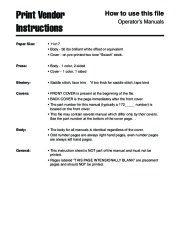 Simplicity 860 960 1693984 1693985 1694242 1694435 1694439 Large Frame Snow Blower Owners Manual - 1 of 32
Simplicity 860 960 1693984 1693985 1694242 1694435 1694439 Large Frame Snow Blower Owners Manual - 1 of 32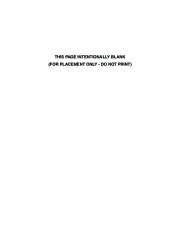 Simplicity 860 960 1693984 1693985 1694242 1694435 1694439 Large Frame Snow Blower Owners Manual - 2 of 32
Simplicity 860 960 1693984 1693985 1694242 1694435 1694439 Large Frame Snow Blower Owners Manual - 2 of 32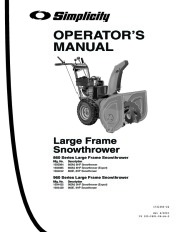 Simplicity 860 960 1693984 1693985 1694242 1694435 1694439 Large Frame Snow Blower Owners Manual - 3 of 32
Simplicity 860 960 1693984 1693985 1694242 1694435 1694439 Large Frame Snow Blower Owners Manual - 3 of 32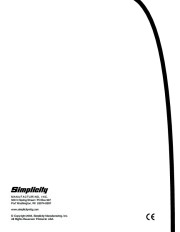 Simplicity 860 960 1693984 1693985 1694242 1694435 1694439 Large Frame Snow Blower Owners Manual - 4 of 32
Simplicity 860 960 1693984 1693985 1694242 1694435 1694439 Large Frame Snow Blower Owners Manual - 4 of 32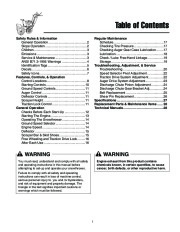 Simplicity 860 960 1693984 1693985 1694242 1694435 1694439 Large Frame Snow Blower Owners Manual - 5 of 32
Simplicity 860 960 1693984 1693985 1694242 1694435 1694439 Large Frame Snow Blower Owners Manual - 5 of 32 Simplicity 860 960 1693984 1693985 1694242 1694435 1694439 Large Frame Snow Blower Owners Manual - 6 of 32
Simplicity 860 960 1693984 1693985 1694242 1694435 1694439 Large Frame Snow Blower Owners Manual - 6 of 32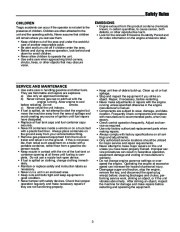 Simplicity 860 960 1693984 1693985 1694242 1694435 1694439 Large Frame Snow Blower Owners Manual - 7 of 32
Simplicity 860 960 1693984 1693985 1694242 1694435 1694439 Large Frame Snow Blower Owners Manual - 7 of 32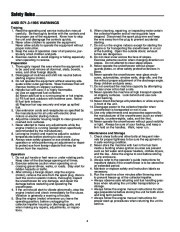 Simplicity 860 960 1693984 1693985 1694242 1694435 1694439 Large Frame Snow Blower Owners Manual - 8 of 32
Simplicity 860 960 1693984 1693985 1694242 1694435 1694439 Large Frame Snow Blower Owners Manual - 8 of 32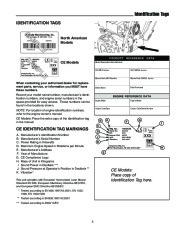 Simplicity 860 960 1693984 1693985 1694242 1694435 1694439 Large Frame Snow Blower Owners Manual - 9 of 32
Simplicity 860 960 1693984 1693985 1694242 1694435 1694439 Large Frame Snow Blower Owners Manual - 9 of 32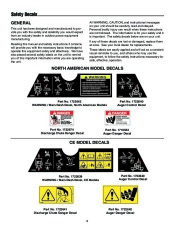 Simplicity 860 960 1693984 1693985 1694242 1694435 1694439 Large Frame Snow Blower Owners Manual - 10 of 32
Simplicity 860 960 1693984 1693985 1694242 1694435 1694439 Large Frame Snow Blower Owners Manual - 10 of 32